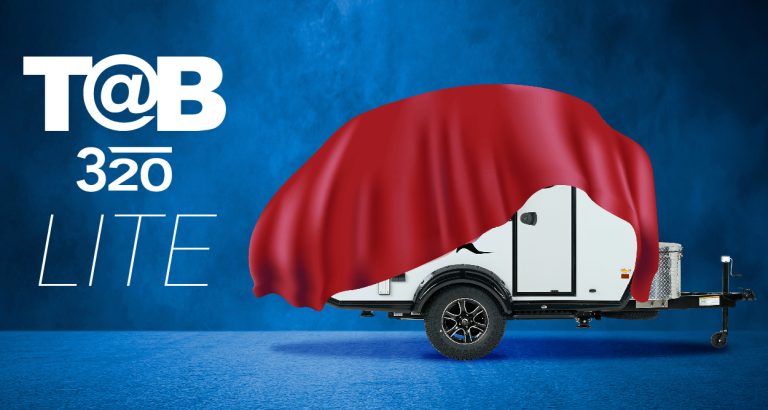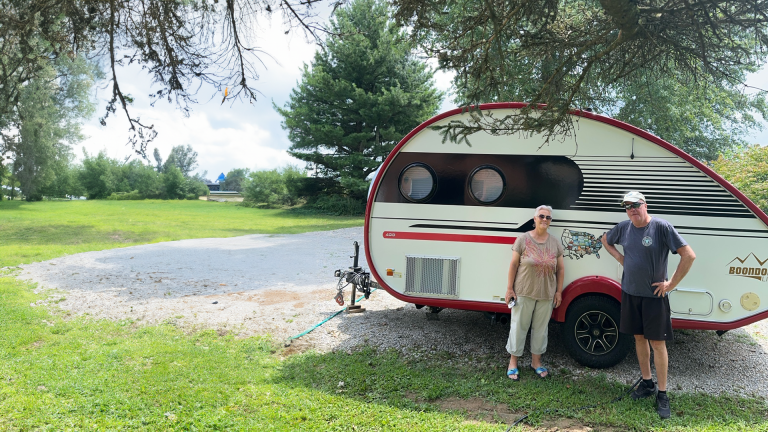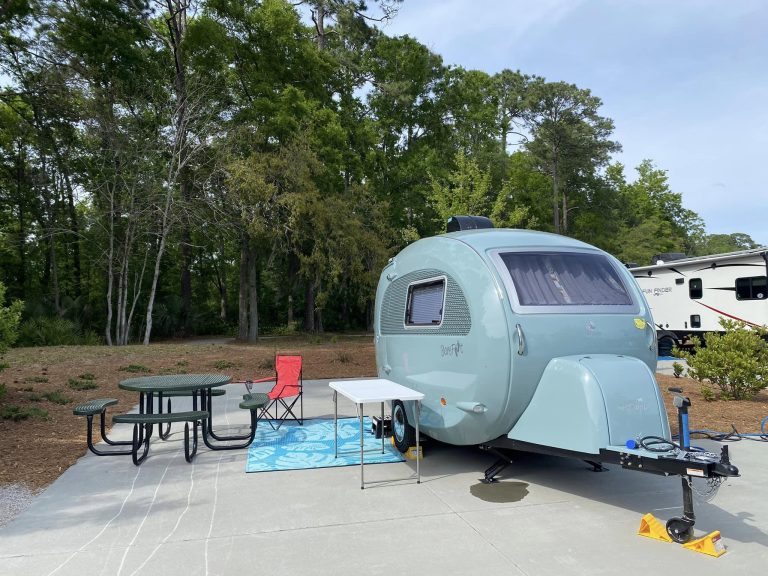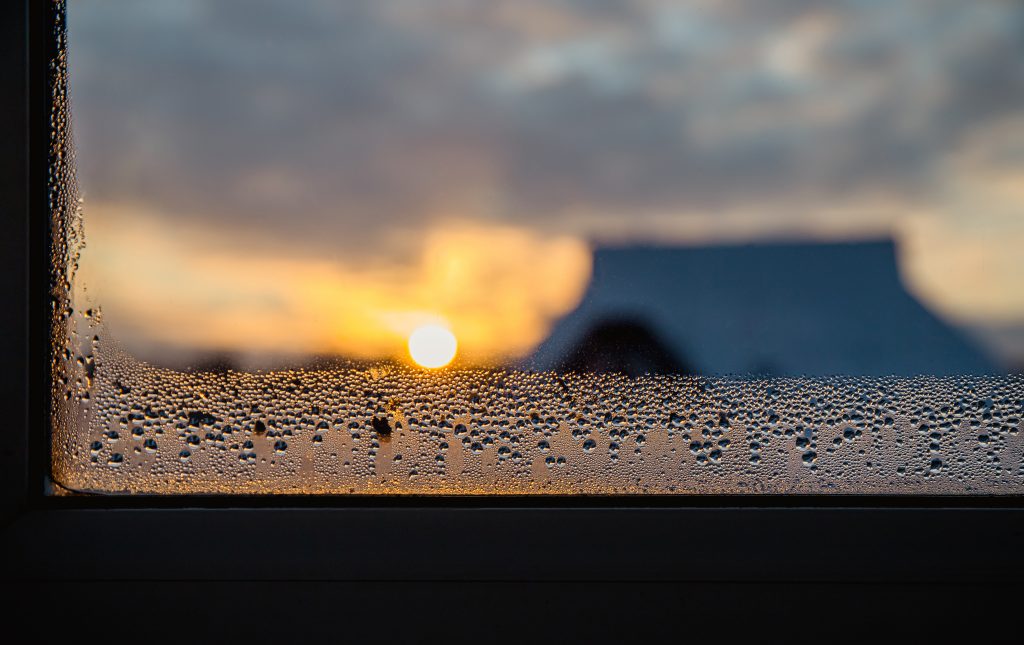It’s summertime, and the livin’ may be easy, as the song goes, but with summer often comes humidity. Controlling humidity in your camper requires some effort on your part. Overlook this task, and you risk some unpleasant and potentially expensive outcomes:
- Damage to finished wood products,
- Rust on metal surfaces,
- An uncomfortable environment in which to sleep,
- And the worst-case scenario, the growth of mildew and mold spores can lead to health problems.
While you can’t do much about the outside humidity levels, you can keep the interior of your mobile living space drier and healthier. Here are some key facts and tips to keep your summertime living cool.
FAQs about summer humidity
What are high humidity levels?
Humidity, or more accurately, relative humidity, is the amount of water in the air expressed as a percent. The higher the dew point, the greater the amount of moisture in the air. But you also have to consider the outdoor temperature, says Weather.gov. For instance, a temperature of 30 degrees with a dew point of 30 will feel far less humid than 80 degrees with a dew point of 60, producing a relative humidity of 50%. A dew point of 55 results in a dry and comfortable environment, while 55 to 65 heads into the “sticky” air and muggy evening level. If the dew point rises above 65, the air will feel oppressive.
How can you monitor humidity levels?
This calls for a handy piece of equipment called an analog or digital hygrometer. While their designs differ, both provide the information you need to keep the humidity level where you want it.
Once you choose your hygrometer, follow these tips from HVAC.com to get the most accurate reading:
- Position it at least five feet above the ground and out of direct sunlight.
- Don’t keep it in a room with temperature swings.
- Avoid moving the hygrometer between rooms.
- Calibrate it once a year.
You can also get an app for your smartphone, notes Explain That Stuff, or a standalone sensor connected to it by a USB cable or Bluetooth (wireless). Hygrometer apps are available for both Apple and Google Play devices.
What can you do to control humidity levels?
The do’s and don’ts related to controlling indoor humidity are pretty basic: know what’s happening outside your camper and take measures to reduce the moisture inside your camper. Your goal is to keep the relative humidity to 60% or less in warm weather.
Start by knowing what kind of humidity levels you’re heading into. Summers in Florida, for example, are notoriously sticky and muggy, while in drier Arizona, the higher temps aren’t accompanied by moisture-laden air. If you’re on the road for most or all of the year, you might want to consider choosing your destination based on the type of climate where you are the most comfortable and won’t feel like you’re spending time in a sauna.
Then, adjust your activities so you don’t become a humidity-producing creature. Whenever possible, cook outside. Preparing food indoors? Run your exhaust fan to ventilate the space. Showering? Use your bathroom fan to get all that humidity outside, or take advantage of campground facilities.
Keep your camper well-ventilated. Run your air conditioner or open windows using small fans to promote cross ventilation. Open cabinet doors slightly when not in transit to ventilate those interior spaces.
Speaking of your A/C system, don’t wait until it’s hot and sticky to turn it on. Start it earlier in the day so that you can get a jump on the heat and humidity. And, of course, park to take advantage of the shade trees provide.
Repair water leaks and liquid spills right away and dry excess moisture.
What else will help reduce moisture and humidity levels?
Even if you follow all those tips, you might need some humidity helpers — such as desiccants and/or a dehumidifier.
Desiccants like DampRid and Dri-Z-Air work well in small spaces (think closets and cupboards) and can remove moisture and that musty smell that often accompanies it. If you’re dry-camping, these products will help keep the moisture level down without power. Ensure the cover is secure, especially if you have pets or small children, to avoid accidental ingestion and follow product directions.
Chances are, however, you’ll need a dehumidifier, especially if your travels take you into high-humidity or damp environments. Not only do they capture the moisture in the air, but they also keep the interior smelling clean and fresh. And because the humidity level drops when you use a dehumidifier, the indoor temperature will feel cooler.
According to Getaway Couple, consider both the size of your camper and the level of humidity you need to control so you get the results you want without wasting energy. RV Share recommends looking for the following features when evaluating various models: a humidistat to monitor humidity levels and switch off the dehumidifier when levels are optimum, a timer you can set to control how long the unit runs (handy if you are gone and don’t want to leave it running for hours), adjustable louvers to direct airflow, and a laundry setting for clothes you’ve hung up to dry.
For more help choosing the right brand and model, check out these sites: Mowgli Adventures, RVing Beginner, Drivin and Vibing, and The Drive. They all have lists of dehumidifier brands, along with customer reviews and ratings.
Recent Articles





